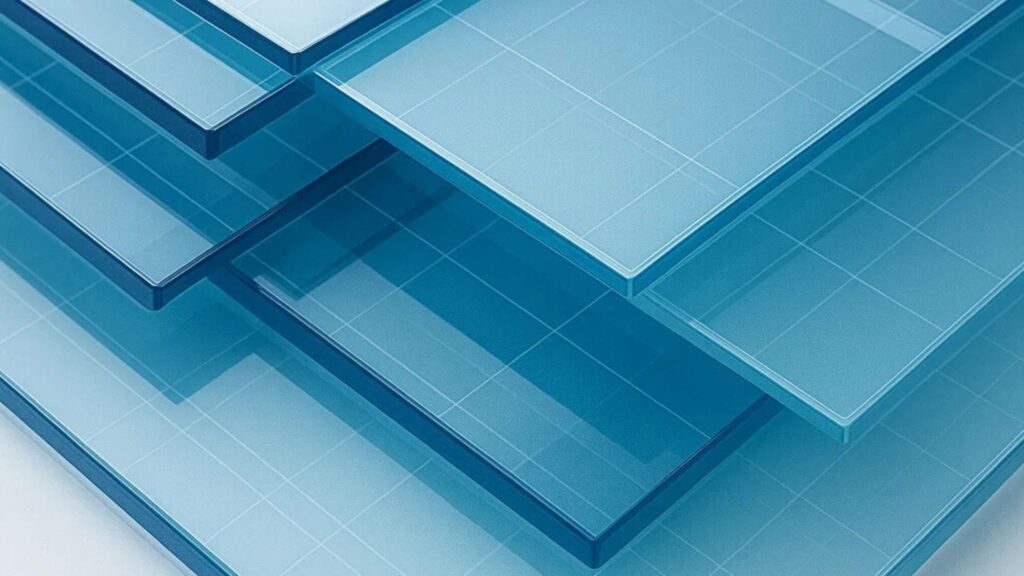Home » Flat Glass and Its Fabrication
Flat glass is a transparent and versatile material known for its strength and stability. It is produced by solidifying a liquid without crystallization, making it an amorphous solid without an ordered crystalline structure. The glass used in construction and many other industries is primarily composed of silicon oxide. Its main characteristic is transparency, but it is also valued for its durability and chemical resistance. Flat glass forms the basis of numerous applications, including furniture, refrigeration, and construction.
Float glass is the most common type of flat glass, produced through an innovative floating process. In this method, molten glass is poured onto a bath of molten tin, where it floats on the surface, forming a perfectly smooth sheet on both sides. As it cools, the glass solidifies into a continuous ribbon that can be cut to the desired length. The two surfaces of float glass are chemically different because they are in contact with different environments—tin and air. This difference is especially noticeable through ultraviolet light reflection, which reveals the distinct surfaces.

Once flat glass is produced, it can undergo a variety of processes to tailor it to the specific needs of the customer. Thanks to the use of advanced automated machinery, these processes are precise and versatile, enabling us to meet a wide range of requirements:
Custom Cutting
using automated systems to ensure precision and speed
Drilling & Milling
to create openings for functional elements like handles or supports
Shaping
to create custom shapes according to the client’s design
Screen Printing
to apply custom decorations
Tempering
to strengthen the glass by increasing its mechanical and thermal resistance
Each stage of the process is monitored in real time through an integrated management system, ensuring quality, traceability, and flexibility in production while efficiently handling both small and large batch orders.